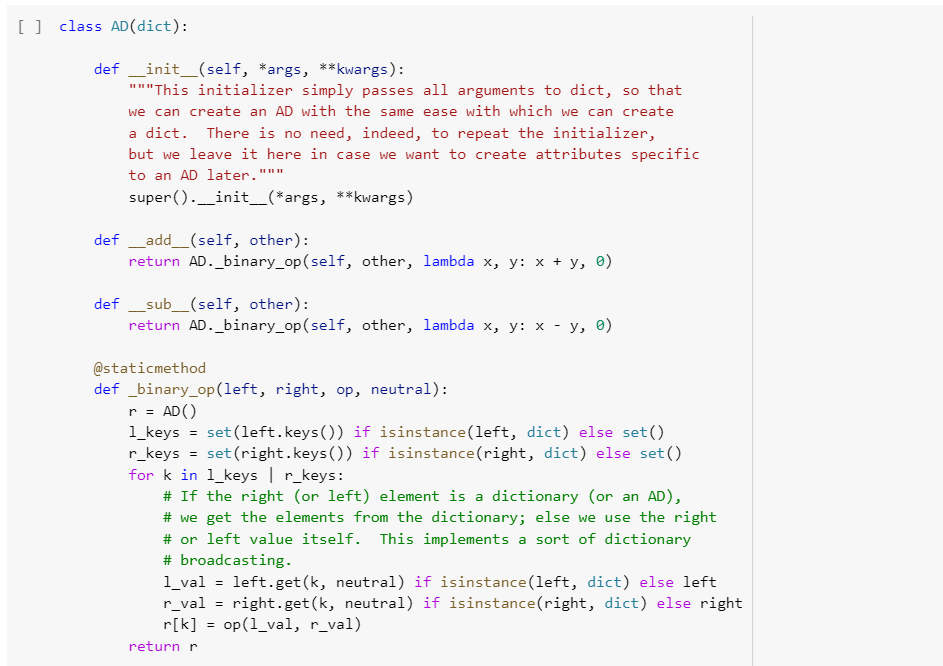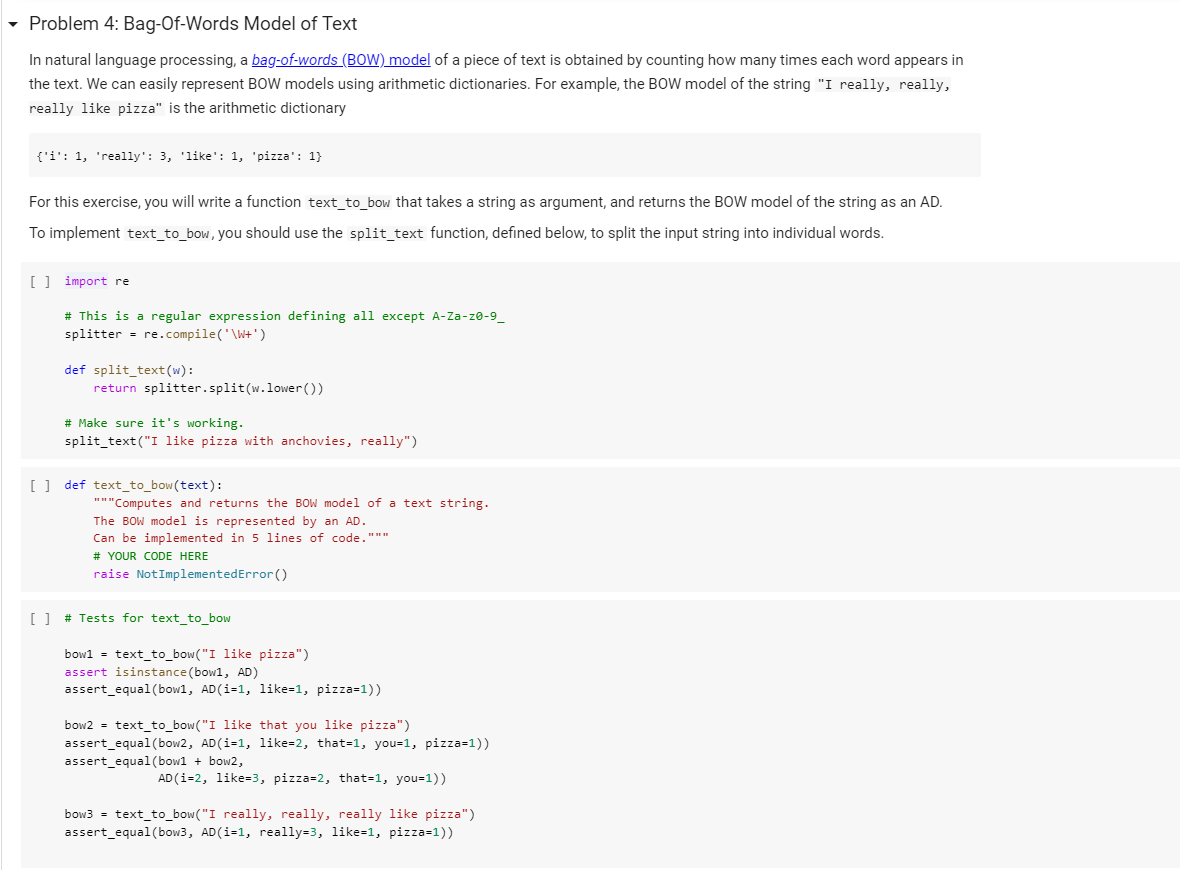Python Problem:
Given Codes:

Problem:

[] class AD (dict): def __init_(self, *args, **kwargs): "" "This initializer simply passes all arguments to dict, so that we can create an AD with the same ease with which we can create a dict. There is no need, indeed, to repeat the initializer, but we leave it here in case we want to create attributes specific to an AD later." super(). __init__(*args, **kwargs) def _add_(self, other): return AD._binary op (self, other, lambda x, y: x + y, 0) def __sub_(self, other): return AD._binary_op(self, other, lambda x, y: x - y, 0) @staticmethod def _binary_op(left, right, op, neutral): r = AD() 1_keys = set(left. keys()) if isinstance(left, dict) else set() r_keys = set (right.keys()) if isinstance(right, dict) else set() for k in 1_keys r_keys: # If the right (or left) element is a dictionary (or an AD), # we get the elements from the dictionary; else we use the right # or left value itself. This implements a sort of dictionary # broadcasting. 1_val = left.get(k, neutral) if isinstance(left, dict) else left r_val = right.get(k, neutral) if isinstance(right, dict) else right r[k] = op(l_val, r_val) return r - Problem 4: Bag-of-Words Model of Text In natural language processing, a bag-of-words (BOW) model of a piece of text is obtained by counting how many times each word appears in the text. We can easily represent BOW models using arithmetic dictionaries. For example, the BOW model of the string "I really, really, really like pizza" is the arithmetic dictionary {'i': 1, "really': 3, 'like': 1, 'pizza': 1} For this exercise, you will write a function text_to_bow that takes a string as argument, and returns the BOW model of the string as an AD. To implement text_to_bow, you should use the split_text function, defined below, to split the input string into individual words. [] import re # This is a regular expression defining all except A-Za-Z0-9_ splitter = re.compile("\W+') def split_text(w): return splitter.split(w.lower() # Make sure it's working. split_text("I like pizza with anchovies, really") [] def text_to_bow(text): **Computes and returns the BOW model of a text string. The BOW model is represented by an AD. Can be implemented in 5 lines of code."** # YOUR CODE HERE raise Not ImplementedError() [ ] # Tests for text_to_bow bowl = text_to_bow("I like pizza") assert isinstance (bowl, AD) assert_equal (bowl, AD(i=1, like=1, pizza-1)) bow2 = text_to_bow("I like that you like pizza") assert_equal (bow2, AD(i=1, like=2, that=1, you=1, pizza-1)) assert_equal(bowl + bow2, AD(i=2, like=3, pizza=2, that=1, you=1)) bow3 = text_to_bow("I really, really, really like pizza") assert_equal(bow3, AD(i=1, really=3, like-1, pizza-1))








